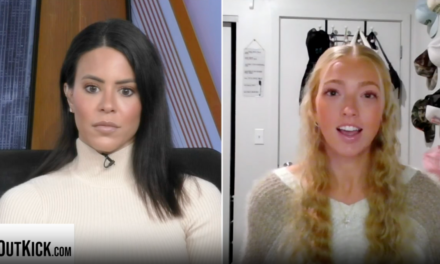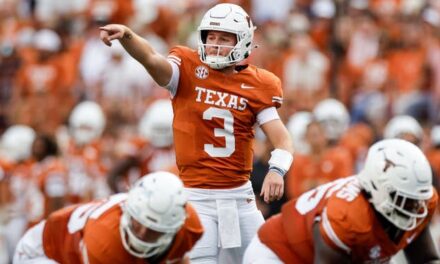We support our Publishers and Content Creators. You can view this story on their website by CLICKING HERE.
Let’s establish that Dr. David Chao is not a dream killer but a realist, so keep that in mind as he’s going to discuss the Detroit Lions’ hope that edge rusher Aidan Hutchinson, out with a broken leg, can return if the team makes a Super Bowl run.
“The good news is I think he will be ready to go for the start of the next regular season,” said Dr. Chao, OutKick’s medical contributor. “As far as the playing in the Super Bowl stuff, that’s interesting. Let’s keep hope alive. My son wants to be a major league baseball player. I’m not going to dash his dream, but, come on.”

ARLINGTON, TX – OCTOBER 13: Detroit Lions defensive end Aidan Hutchinson (97) is carted of the field with an aircast on his left leg during the game between the Dallas Cowboys and the Detroit Lions on October 13, 2024 at AT&T Stadium in Arlington, Texas. (Photo by Matthew Pearce/Icon Sportswire via Getty Images)
Associated Damage A Problem
So why doesn’t Dr. Chao believe Hutchinson could be back for a Super Bowl game nearly four months from now if the Lions make it?
“Can his bones be healed by the Super Bowl? Yes,” Dr. Chao said. “But that’s like saying can your pipe can be fixed from a leak without talking about associated water damage. What about the muscle tissue associated? What about getting back in shape? No way no how.”
This comes after Lions coach Dan Campbell would not rule out Hutchinson coming back in time for the postseason – perhaps if the team went as far as the Super Bowl in February.
“It’s probably 4-6 months, but I would never count Hutch out. It hurts, but if anyone could make it back, it is him,” Campbell said.

ARLINGTON, TX – OCTOBER 13: Detroit Lions head coach Dan Campbell watches from the sidelines during the game between the Dallas Cowboys and the Detroit Lions on October 13, 2024 at AT&T Stadium in Arlington, Texas. (Photo by Matthew Pearce/Icon Sportswire via Getty Images)
Cortical Bone Fracture Takes Longer
The Super Bowl is four months away. But that isn’t happening for Hutchinson, Dr. Chao said.
“Could he stand on the sideline at the Super Bowl? Absolutely,” the founder of Sports Injury Central said. “Could he be an edge rusher and be effective? Not a chance.”
But, but, don’t bone fractures take six to eight weeks to heal?
“This is a cortical bone fracture,” Dr. Chao said. “Once again, not all bones heal at the same rate. And the type of healing is different. But shaft fractures take longer to heal – it has to do with blood supply and other things. The healing on this is well over eight weeks.
“And there’s accompanying soft tissue damage. “
The doctor uses an analogy of a load bearing beam in a home collapsing. That beam must be repaired. But there is associated damage from the collapse with walls, perhaps windows, and other nearby materials. And it takes time to reconstruct.
“Let’s keep hope alive,” Dr. Chao said, “but, no, it’s not realistic.”
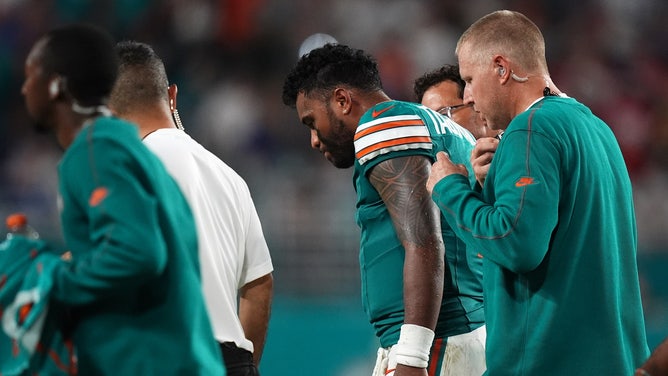
Sep 12, 2024; Miami Gardens, Florida, USA; Miami Dolphins quarterback Tua Tagovailoa (1) walks off the field with training staff after an apparent injury during the second half against the Buffalo Bills at Hard Rock Stadium. Mandatory Credit: Jasen Vinlove-Imagn Images
Tua Tagovailoa Back To Baseline
It’s no longer a question of whether Tua Tagovailoa will return to play for the Miami Dolphins this season but when he’ll return.
And in the wake of the Dolphins announcing that the quarterback will return to action this season, Dr. Chao is not changing his opinion on the matter based on Tagovailoa’s history of three NFL concussions and fourth since college.
“Period, end of story what is safest for Tua is to quit playing football,” Dr. Chao said. “Period. But if he wants to play, he’ll get the clearance to return.
“He has gotten back to baseline. Right? But is it risky for him to play football again? Absolutely. Is it more risky for him than someone who has not had a concussion? Absolutely. Is it too risky for [a doctor] to take away his right to play and do what he loves?
“That’s something for him and his family to decide.”
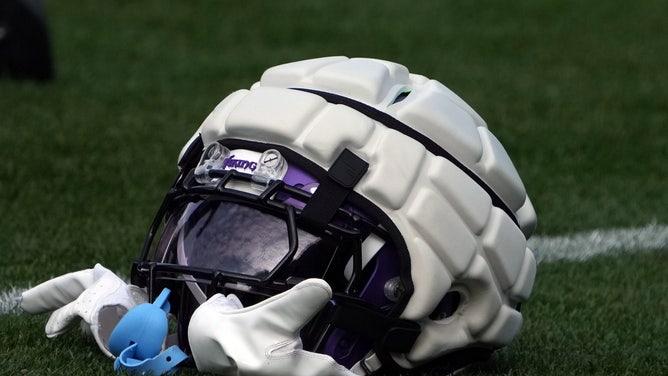
Oct 4, 2024; Watford, United Kingdom; A Minnesota Vikings helmet with Guardian helmet cap during practice at The Grove. Mandatory Credit: Kirby Lee-Imagn Images
A Prediction On Tagovailoa Head Gear
Dr. Chao predicts Tagovailoa will wear a Guardian Cap over his latest model helmet when he returns in order to provide maximum protection from concussions.
“I’m not saying the Guardian cap is magical, I’m not saying that at all,” Dr. Chao said. “However, it’s gained acceptance. It looks less weird than we thought once they put the logos on it, and it is proven to help.”
Tagovailoa would be doing something different to try to address his apparent propensity to suffer concussions – aside from his reported jiu-jitsu lessons. That is a good thing for everyone.
“It’ll make him feel better, it makes the team feel better, it makes the league feel better, it makes the public feel better,” Dr. Chao said.
The fact Tagovailoa has been given the option to return means he hasn’t been found to have permanent damage, according to Dr. Chao.
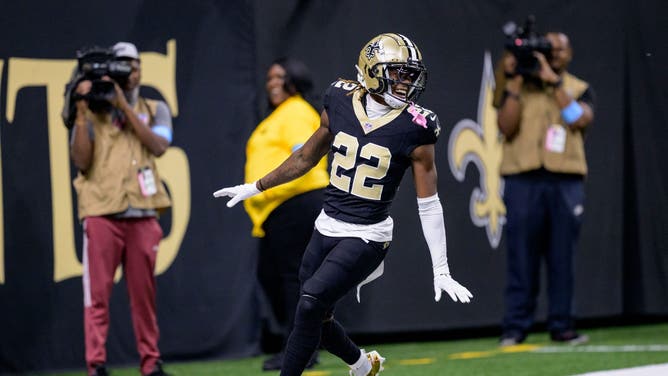
Oct 13, 2024; New Orleans, Louisiana, USA; New Orleans Saints wide receiver Rashid Shaheed (22) returns a punt for a touchdown during the second quarter against the Tampa Bay Buccaneers at Caesars Superdome. Mandatory Credit: Matthew Hinton-Imagn Images
Rashid Shaheed Done For Season
The well-chronicled meniscus exploratory surgery has claimed another player for the entire season.
New Orleans Saints returner and receiver Rashid Shaheed is out for the season after doctors determined that Shaheed’s meniscus needed a full repair, as opposed to a trim.
Doctors went in this week to see which procedure was necessary. A trim of the meniscus could have given Shaheed a chance to return later in the season.
Now, he’s out until next season, although he should be ready for offseason work.
Minnesota Vikings quarterback J.J. McCarthy underwent a similar exploratory surgery prior to the season and was also found to require a full repair.
“There are certain meniscus tears that are obvious trims, that won’t heal,” Dr. Chao said. “That actually is quicker recovery. And there are some meniscus tears that might heal, that are actually the bigger ones, and if you decide to sew it, the player for sure done for the season.
“And here’s the thing people don’t really understand: They think it’s the player’s choice or the surgeon’s choice. No, it’s dictated by the injury itself. Certain types of meniscus tears can be amenable to repair, and by the way, those are the bigger ones because they’re peripheral where there’s blood supply.
“The smaller ones are not amenable to repair, and therefore they’re trimmed. So a lot of it is dictated by the injury itself – not the surgeon or what the player wants to do.”

 Conservative
Conservative  Search
Search Trending
Trending Current News
Current News 

